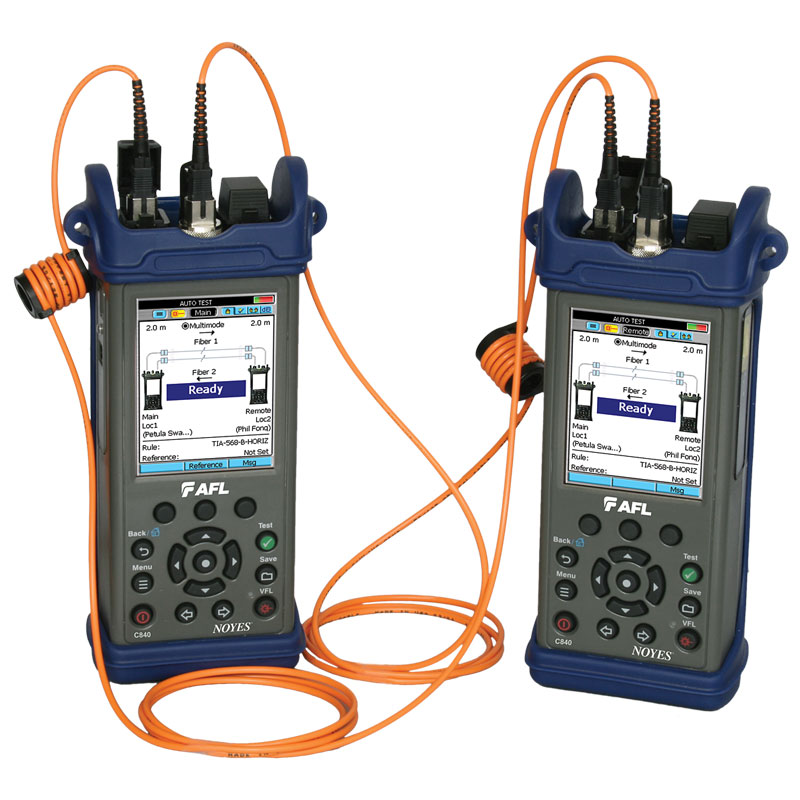How fibre testing equipment supports network efficiency
Wiki Article
All You Need to Learn About Robotic Vision and Its Applications in Advanced Optical Dimension Equipments
Robotic vision stands for a considerable development in the intersection of computer vision, expert system, and artificial intelligence. This innovation enhances the accuracy of optical measurement systems, enabling real-time data evaluation and enhanced quality control. Its influence covers multiple fields, from producing to healthcare. Nonetheless, the progressing landscape of robotic vision questions about future capacities and applications (optical measurement system). What advancements exist ahead in this transformative area?Understanding Robotic Vision: Trick Concepts and Technologies
Robotic vision encompasses the modern technologies and methodologies that make it possible for machines to translate and recognize visual details from their environment. This area combines aspects of computer system vision, synthetic knowledge, and equipment knowing to assist in computerized decision-making based on visual information. Trick concepts include picture handling, which entails the enhancement and analysis of pictures to draw out purposeful attributes, and object recognition, which enables makers to recognize and classify objects within a scene.
The Combination of Robotic Vision With Optical Dimension Equipments
As industries progressively require precision and effectiveness, the combination of robot vision with optical measurement systems has become a transformative technique. This harmony allows robots to view and translate their environments, enhancing the capability of optical measurement systems to examine and assess things with exceptional precision. By outfitting optical sensing units with advanced imaging technologies, robotic vision allows real-time data collection and processing, assisting in instant changes to dimension criteria.The combination empowers automated systems to discover variations in dimensions, surface area top quality, and placement, which are important in high quality control processes. Enhanced algorithms, such as artificial intelligence, more increase this combination by improving the systems' capacity to adjust to different environments and scenarios. The integration not just improves dimension processes yet likewise minimizes mistakes, ensuring that items meet rigid industry requirements, thereby strengthening the role of robotic vision in the future of optical dimension systems.
Applications of Robotic Vision in Manufacturing
In modern-day manufacturing atmospheres, the use of vision systems has revolutionized production procedures by enabling makers to perform tasks with impressive precision and rate. Robotic vision systems are increasingly utilized for top quality control, where they examine items for defects and assurance adherence to requirements. These systems utilize cams and progressed algorithms to evaluate items in real-time, substantially reducing the danger of human mistake.In addition, robotic vision helps with automation in setting up lines, permitting robots to precisely recognize parts and assemble them with very little downtime. This innovation additionally boosts inventory management, as vision systems can keep track of stock levels and find disparities, guaranteeing a seamless supply chain.
In addition, robotic vision aids in the implementation of smart factories, where data from vision systems can be integrated with various other modern technologies to maximize operations. On the whole, the applications of robot vision in producing demonstrate its vital role in enhancing performance, top quality, and performance throughout different sectors
Robotic Vision in Medical Care: Changing Individual Care

In rehabilitation, robotic vision aids in keeping track of client development and tailoring therapy sessions to individual needs. It sustains doctor by automating jobs such as data collection and client monitoring, allowing for more time to concentrate on straight individual interaction. Furthermore, robotic vision boosts telemedicine by making it possible for remote medical diagnosis and online consultations, linking the void in between individuals and doctor. In general, the application of robotic vision in medical care is reinventing individual care, bring about enhanced outcomes, performance, and individual fulfillment.
Future Trends and Growths in Robotic Vision Innovation
The rapid development of robotic vision modern technology guarantees to further improve its applications across different sectors, consisting of healthcare. Future fads indicate a substantial shift in the direction of incorporating expert system and equipment knowing, enabling systems to find out from large datasets and boost accuracy gradually. Enhanced sensor modern technologies and deep knowing formulas are anticipated to refine item acknowledgment capabilities, enabling robotics to interpret complicated settings better.
The assimilation of augmented reality (AR) with robotic vision will likely reinvent exactly how robotics aid in medical treatments and diagnostics. This harmony will certainly facilitate real-time data visualization, enhancing decision-making processes. Additionally, miniaturization of robotic vision elements will result in more small and flexible robot vision systems appropriate for a selection of jobs. As these innovations unravel, sectors will certainly witness raised automation and performance, strengthening robot vision as a foundation of ingenious technological services.
Often Asked Concerns
What Are the Main Components of a Robot Vision System?
The major elements of a robotic vision system include video cameras for image capture, cpus for information evaluation, algorithms for interpretation, and actuators for activity. With each other, these aspects enable robotics to regard and engage with their atmosphere effectively.Just How Does Robotic Vision Improve Precision in Measurements?
Robotic vision improves measurement precision by using advanced imaging modern technologies, allowing accurate things discovery and spatial analysis. This capacity decreases human error, raises repeatability, and enables for real-time adjustments, inevitably enhancing overall dimension reliability and performance.What Industries Benefit A Lot Of From Robotic Vision Modern Technology?
Various markets profit greatly from robotic vision modern technology, consisting of manufacturing, health care, farming, and logistics. These fields utilize improved precision, effectiveness, and automation, bring about improved productivity and minimized functional prices in their respective processes.Can Robotic Vision Systems Operate In Low-Light Conditions?
Robotic vision systems can undoubtedly operate in low-light problems, making use of innovative sensors and formulas to enhance image clarity. This capability enables them to carry out successfully in numerous settings, consisting of commercial and security applications, also with very little lighting.What Are the Expenses Related To Executing Robotic Vision?
The expenses connected with carrying out robotic vision vary considerably, influenced by parts such as electronic cameras, software, and assimilation. Added costs include maintenance, training employees, and possible upgrades to existing systems, which can gather with time.Report this wiki page